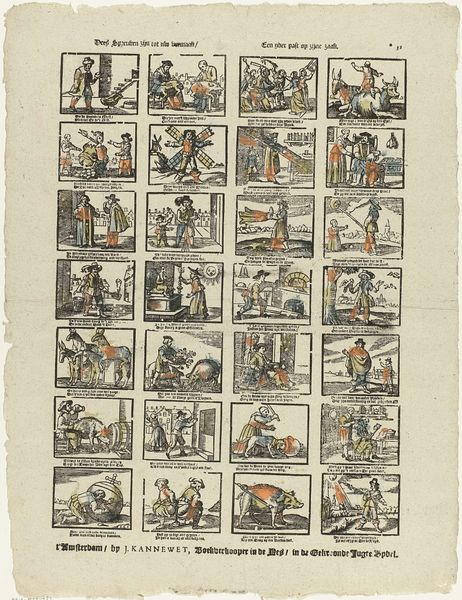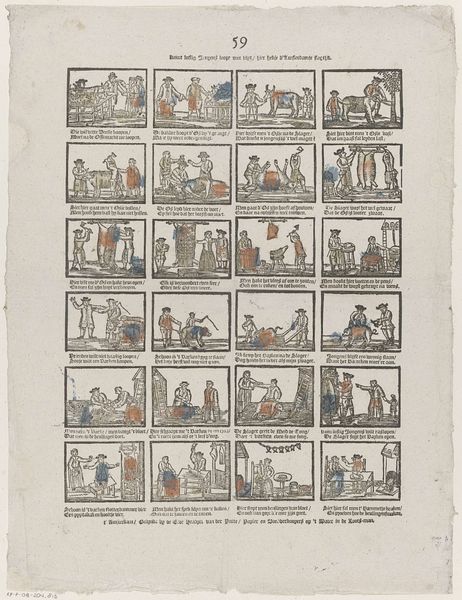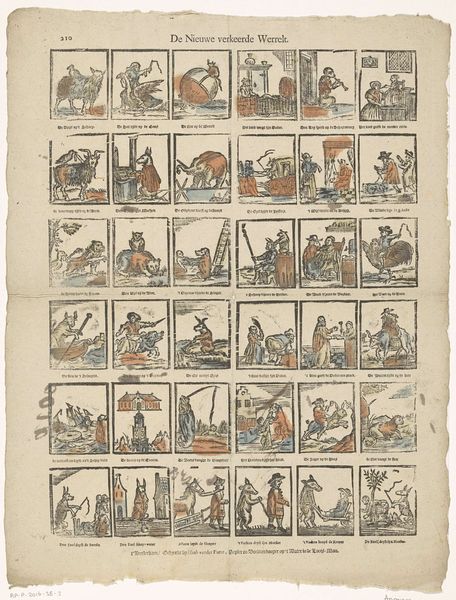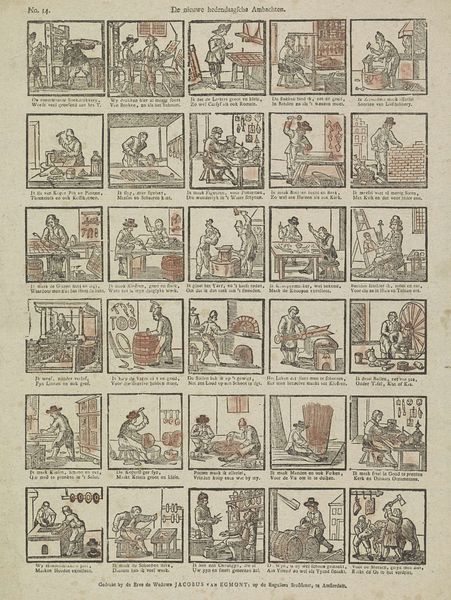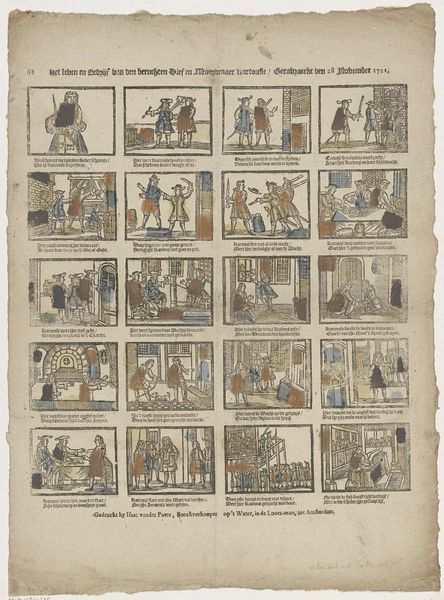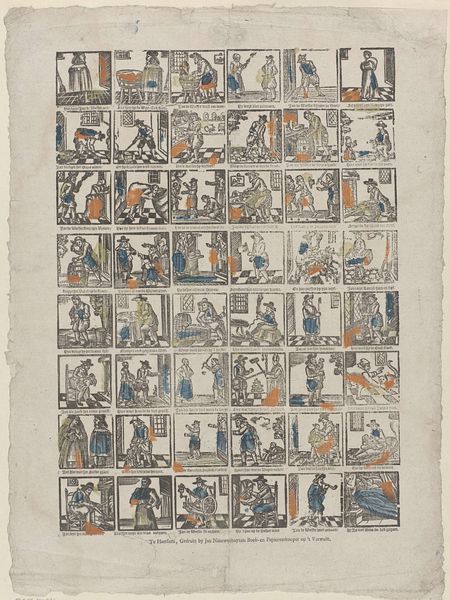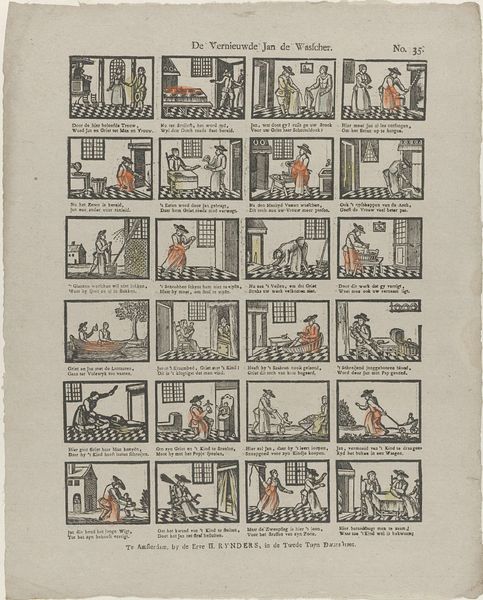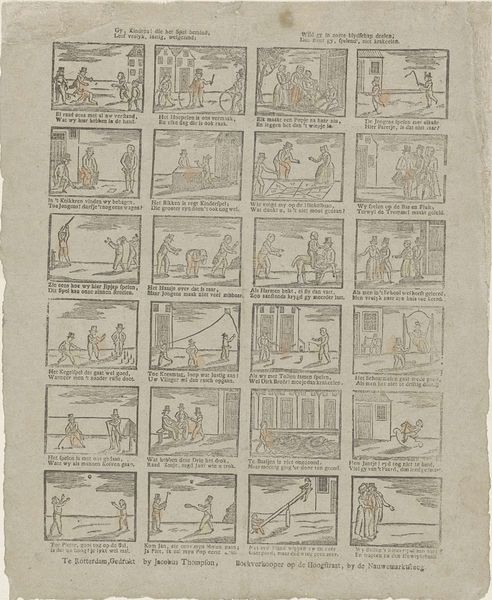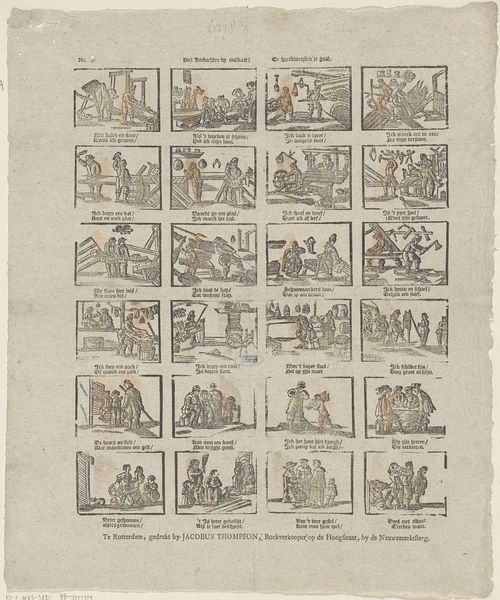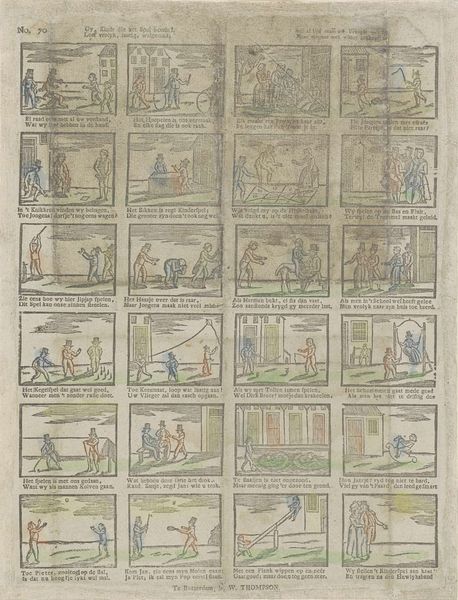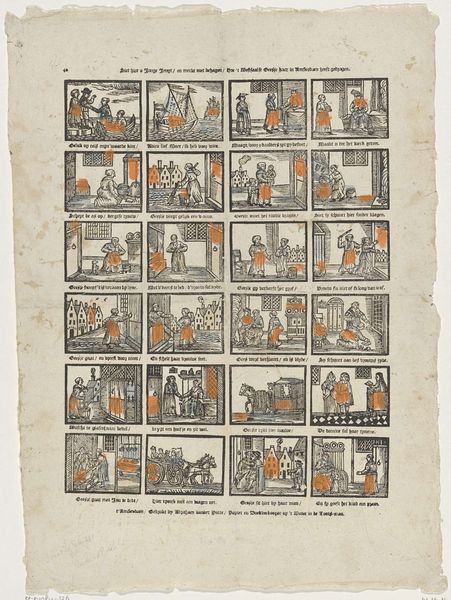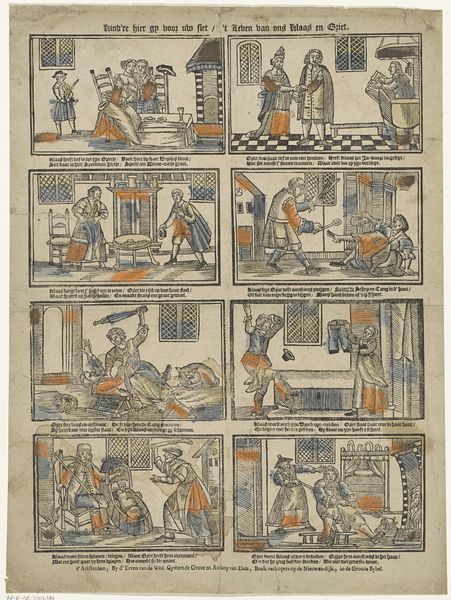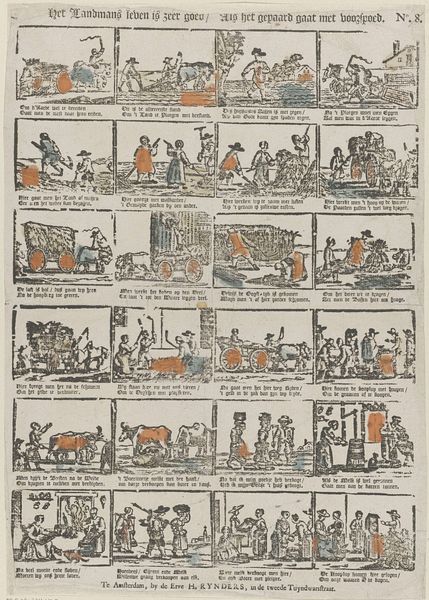
Het landmans leven is zeer goed / Als het gepaard gaat met voorspoed 1725 - 1780
0:00
0:00
print, engraving
#
narrative-art
#
baroque
# print
#
folk-art
#
genre-painting
#
engraving
Dimensions: height 401 mm, width 320 mm
Copyright: Rijks Museum: Open Domain
Curator: Here we have an engraving from sometime between 1725 and 1780, titled “Het landmans leven is zeer goed / Als het gepaard gaat met voorspoed.” Editor: It reminds me of a cartoon strip, little vignettes all laid out. A bit like a tapestry, showing the stages of labor. Are we seeing labor being valorized? Curator: Certainly, the title translates to something like "The life of the farmer is very good / When accompanied by prosperity.” It does have that sense of a moralizing tale, suggesting that labor equals happiness. Each little scene seems carefully designed to show a different part of farm work, imbuing each with its own meaning, from ploughing to harvesting, interacting, selling and buying... It feels designed to instill pride and optimism for farmers. Editor: You can see the whole economy there, right, from earth to table to market? All rendered using such humble materials, it brings us back to that idea of accessible craft, too. Look at the production: printmaking made images widely available for this specific population group. How else would the rural population connect with this narrative? Curator: Precisely. As a print, its meaning isn’t limited to a wealthy patron’s gaze but intended for a broad audience. It invites contemplation on the agricultural way of life and prosperity as divine reward or just a matter of industrious dedication. This grid layout in itself reflects an ordered worldview—each activity has its place and time. I wonder about its broader influence beyond its function of simple agricultural pride. Editor: Indeed. This print provides evidence for understanding class relationships and value systems of the time, through not only the depicted labor, but the materials chosen to make it. The paper stock and the accessibility of the print suggest intended use in middle-class homes rather than aristocratic collections. A sort of didactic celebration of the simple life available to all. Curator: A way to materialize moral tales for popular culture in the 18th century. These miniature allegories helped transmit ideas around value and society through common cultural memory. A sort of folk wisdom, mass-produced. Editor: The convergence of production and promotion reveals such complexity around the meaning of labour and land ownership. Fascinating!
Comments
No comments
Be the first to comment and join the conversation on the ultimate creative platform.
